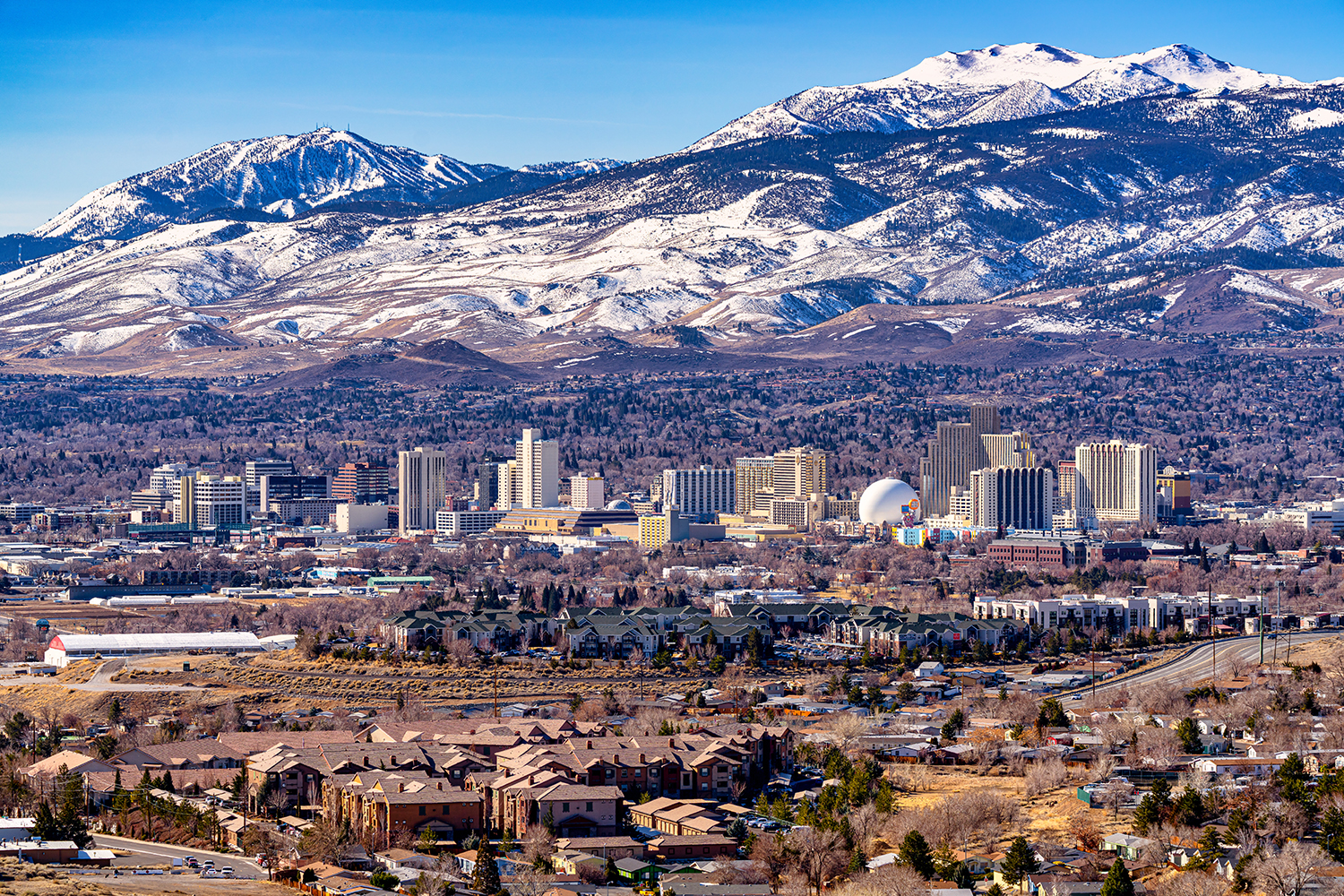As years of economic development efforts come to fruition, more people and businesses are relocating to Northern Nevada and impacting the Reno economy positively. However, with this growth comes the challenge of meeting new demand for housing, education, and other critical infrastructure, according to experts who spoke at Dickson Realty’s annual Economic Summit.
During the virtual event, Mike Kazmierski, president and CEO for the Economic Development Authority of Western Nevada, and Brian Bonnenfant, the project manager for the Center for Regional Studies at the University of Nevada, provided insight on where the Reno economy stands and what to expect for the remainder of 2021.
In their presentations, both Kazmierski and Bonnenfant referenced Reno’s numerous recognitions over the past year. The 2020 Milken Institute Best Performing Cities Report recently ranked Reno as No. 4 in the best performing large city category, behind Austin, Texas, and Salt Lake City. Reno also ranked No. 1 in the 2020 Resonance Consultancy America’s Best Cities Report and No. 6 in the 2020 Niche Rankings best places to raise a family category.
Both experts also recognized how these acknowledgments directly reflect the efforts that have attracted more people and businesses to the area and subsequently contributed to the housing conditions the region is experiencing.
Here’s why:
4 Things You Need To Know About The Reno Economy
1. There are more opportunities for job growth in the Reno economy
In December 2020, Nevada’s unemployment rate fell to 9.2%—a far cry from the state’s 28% rate in April, which was the worst ever in state history and the country’s highest for 2020.
But the Reno economy has come a long way in recovery as unemployment rates reach 5% below the national average.
There are currently more than 1,000 available jobs in the Reno and Spark region for manufacturing, technology, distribution, and healthcare, Kazmierski said. Most of these professions pay more because companies want a specialized set of skills. For example, software developers who specialize in coding can earn a median annual salary of $110,000.
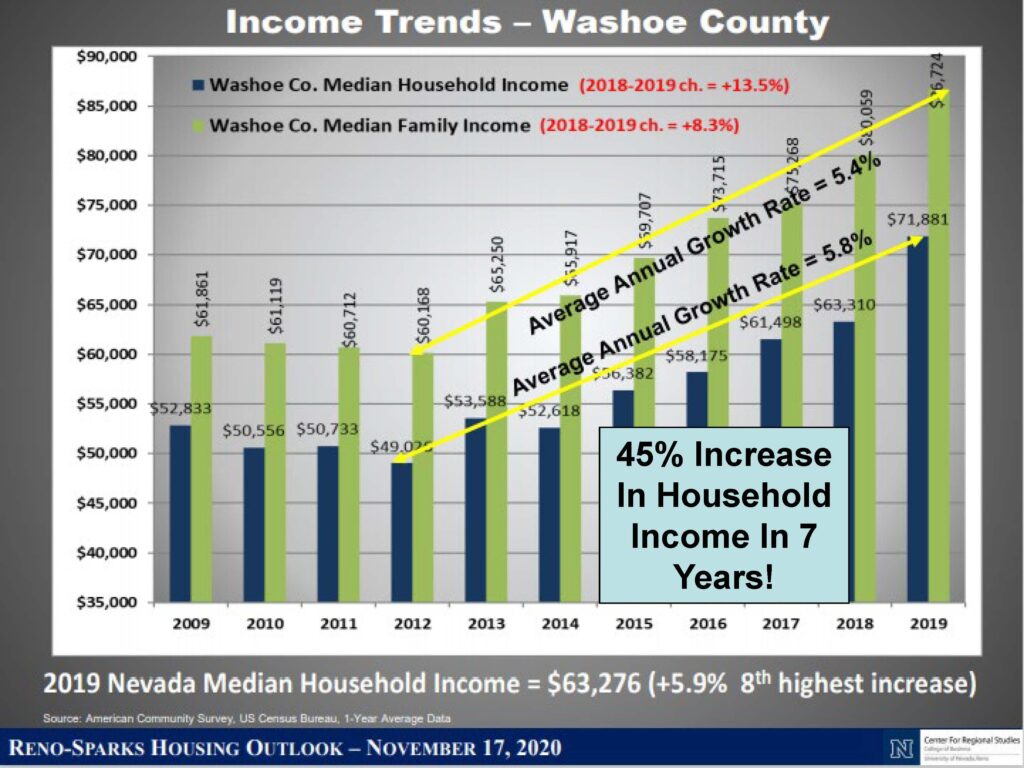 The average household income in the region increased by 45% during the past seven years, according to EDAWN’s analysis of U.S. Census Bureau data. By the end of 2019, the median household income in Washoe County reached $71,881.
The average household income in the region increased by 45% during the past seven years, according to EDAWN’s analysis of U.S. Census Bureau data. By the end of 2019, the median household income in Washoe County reached $71,881.
In January 2021, EDAWN reported attracting jobs with an average wage of about $73,000 due to its diversification efforts.
But, Kazmierski said the education pipeline must improve to ensure the workforce serves current and future employers’ needs. And automation could threaten more than 73 million jobs by 2030, according to the Mckinsey Report.
2. Job growth is driving the demand for housing
As the workforce in Northern Nevada grows, so does the demand for housing. Many California companies are struggling with high operating costs and searching for opportunities to drive down those expenses. In 2020, more than 29 new companies and 10 corporate headquarters moved to Nevada, EDAWN reported. California’s remote tech workers are also finding the lower costs of living in Northern Nevada attractive.
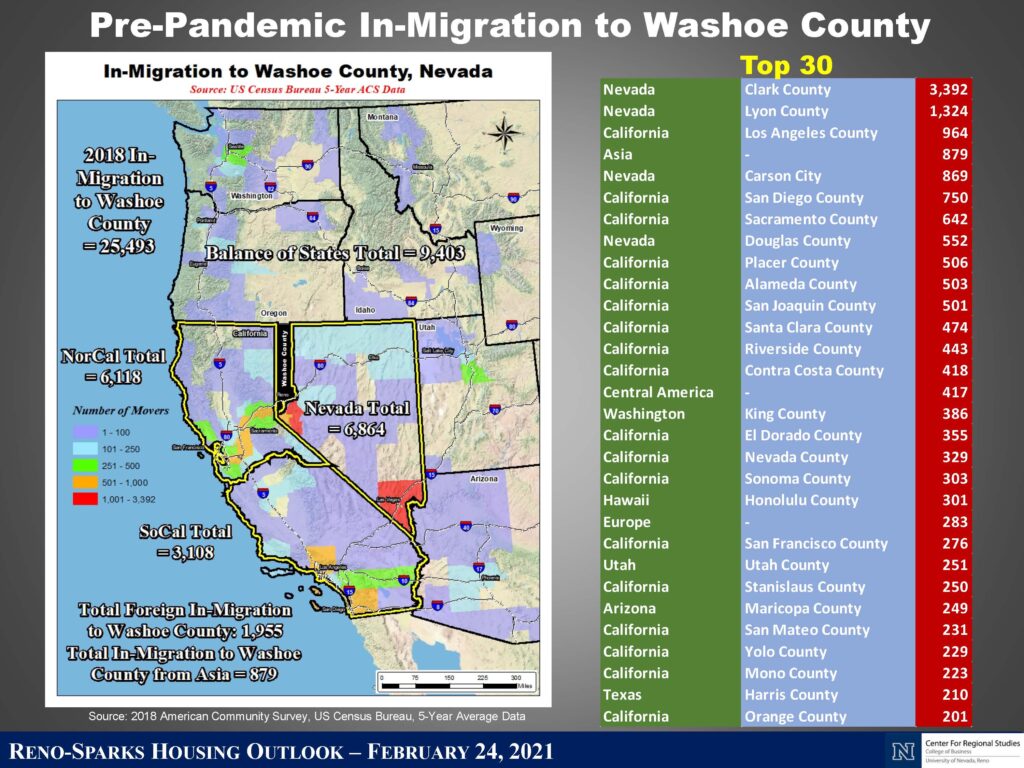
The U.S. Census Bureau found the highest pre-pandemic migration numbers to Washoe County from Clark County, Lyon County, Los Angeles County, San Diego County, and Sacramento County. Many of these people and businesses moved to Northern Nevada to pursue a life away from overcrowded cities.
In 2019, Nevada’s population grew to 3.8 million. And, although we are still waiting on the official census for the past few years, the influx of Californians to Nevada will likely continue to drive the need for more housing.
3. There’s not enough housing supply to meet demand
As housing inventory levels reach record lows, homebuyers are finding about half as many homes for sale this year as were available last year. Housing shortages can cause increased traffic levels and homelessness and drive lower-income families and residents out of the area, Kazmierski said during his presentation.
While Washoe County feels like it’s experiencing more appreciation and market volatility than other areas, that’s not the case. The number of available homes has fallen steeply across the country. Many people—especially baby boomers—were reluctant to move out or downsize as a product of the pandemic. Even as some of those sellers are ready to list their home, there’s still not enough inventory to meet the demand in the Reno/Sparks market—which is driving prices up as demand outpaces supply.
“We’re not in a bubble,” Kazmierski said. “We’re in a demand-driven surge.”
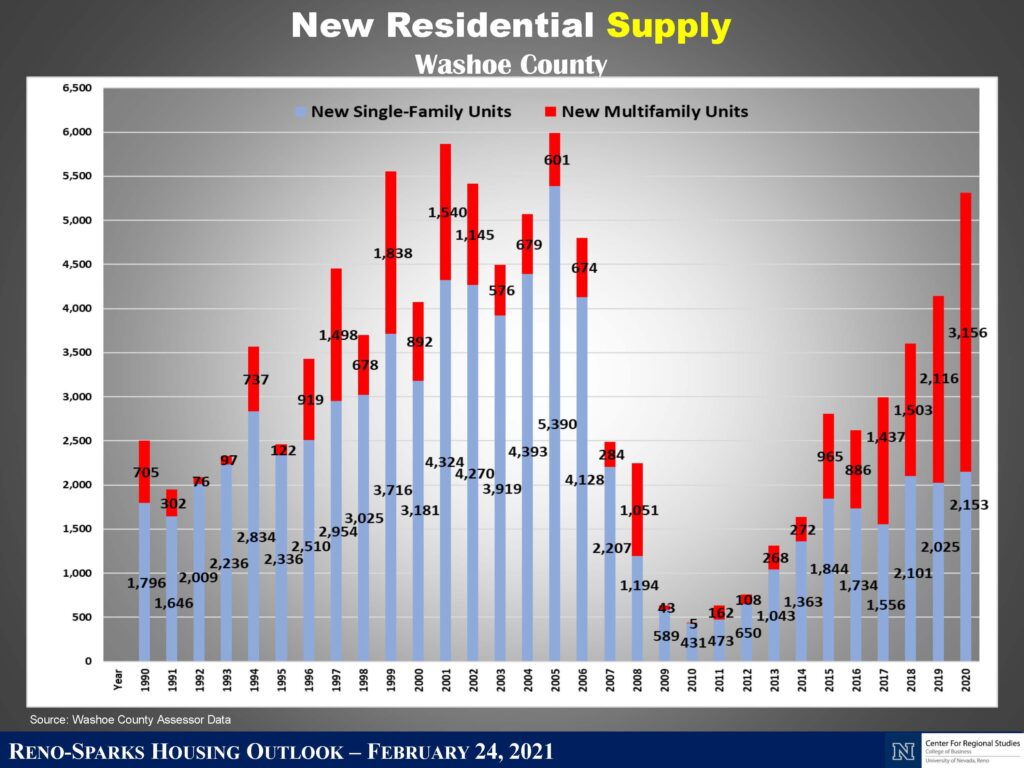
New listings of existing single-family homes in Reno and Sparks have decreased 22% year-over-year, and there are currently fewer than 100 single-family homes for rent. A listing stays on the market for an average of 19 days, which is well below the average days on market we typically see during this time of the year.
The region needs new housing development to accommodate Northern Nevada’s growing population. Housing permits are a good indicator of how many units could be coming online in the next year. In 2020, there were more than 2,950 residential housing permits submitted, and there are currently 5,494 apartment units under construction.
Reno’s submarkets also help diversify the residential pipeline. In 2020, more than 108 homes were listed for less than $350,000 in the North Valleys, which provides hope for affordability in the region. Currently, 2,175 units are under construction, and 3,756 more are approved in the same area. Double Diamond also has 1,424 active units under construction in south Reno.
4. Reno needs more affordable housing and education funding
The Reno economy may be on an upward trend, but it’s also becoming one of the least affordable housing markets in the United States. Residents spend nearly half of their income to afford a median-priced home in Reno. The median price for a single-family is now more than $446,700, a 10% increase year-over-year.
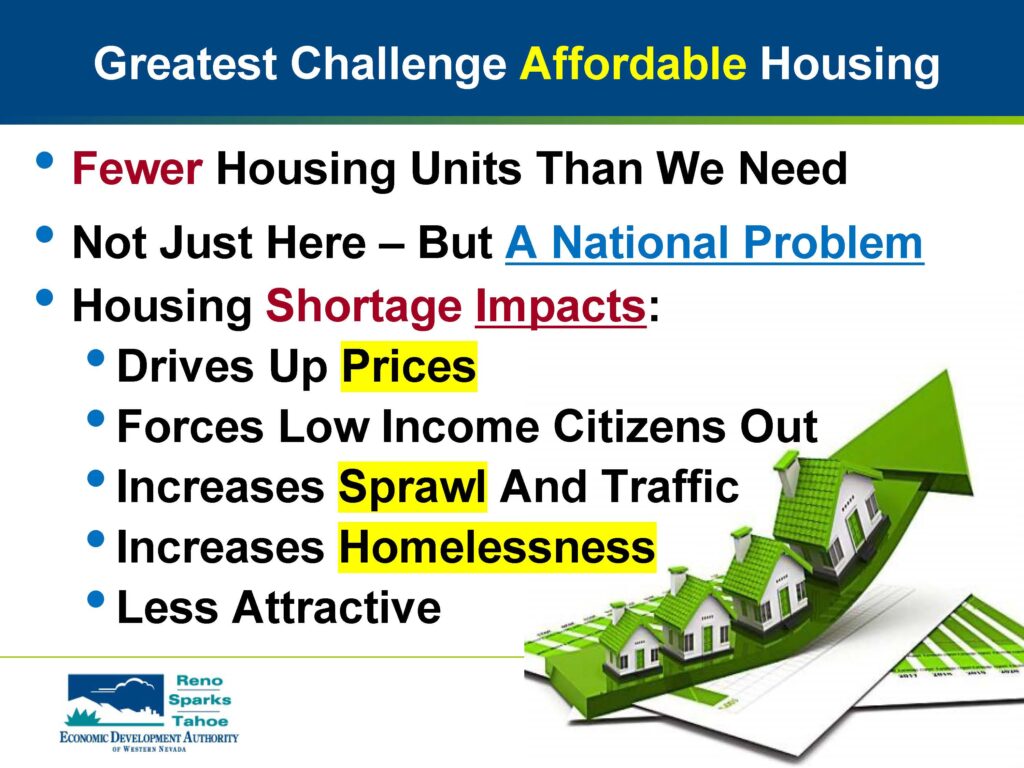
To build more affordable housing, we must address some of the critical constraints on land management. Many limiting factors for affordable housing include labor, lending, lots, laws, and litigation. The Truckee Meadows Public Lands Management Act can potentially provide tens of thousands of acres for new housing development. However, Congress has not passed it yet and needs support from community members to move forward. For more information on how to show your support, click here.
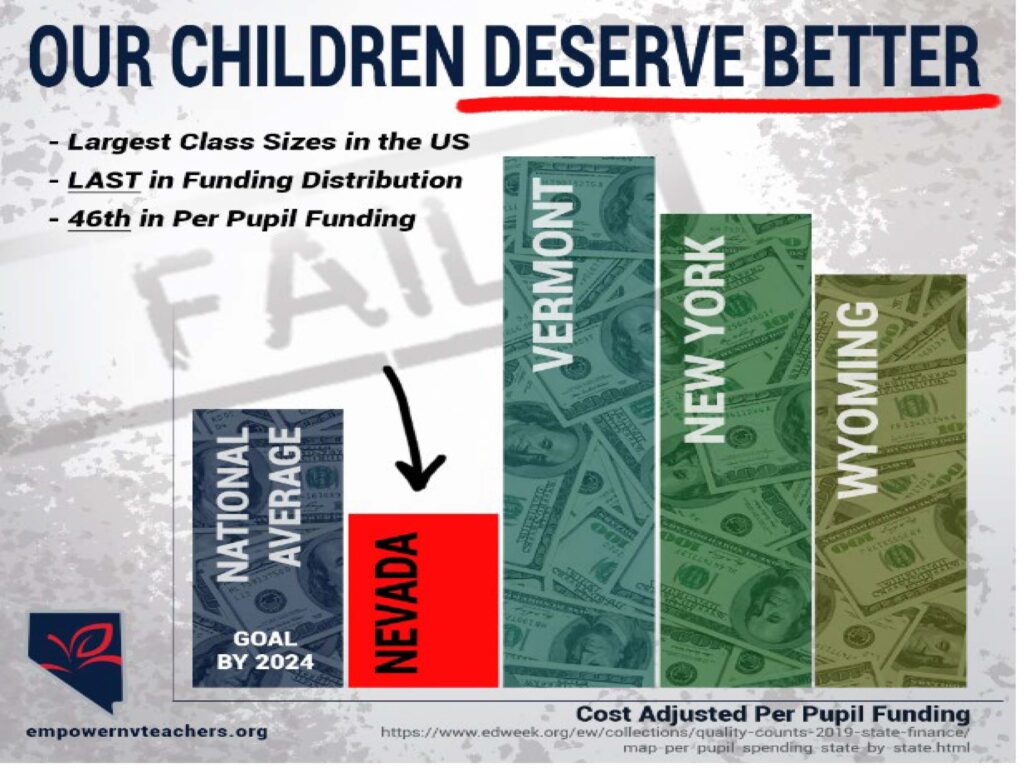
Strengthening the region’s education pipeline to prepare the next generation of entrepreneurs and executives for success is critical to future growth, Kazmierski said. During the past several years and due to funding shortfalls, Washoe County School District has eliminated or shifted more than $68.6 million in costs. At the same time, Nevada children currently receive 30% less educational funding than the national average. Community members can help by signing the Empower Nevada’s Future education pledge here.
What Dickson Is Looking Forward To Next
In 2020, we focused on creating momentum for the future while staying true to our foundational principles:
- Integrity: We always do what is best for our clients by building honest and transparent relationships.
- Mastery: We have the most experienced team, who are continuously learning and improving.
- Market Leadership: More people trust Dickson Realty than any other real estate company in Northern Nevada.
- Neighborhood Expertise: We live here, we love it here, and we give you the insight you need to make informed decisions.
- More than Dickson Realty: The founders of Dickson Realty envisioned a symbiotic relationship with the community. As our region has grown, Dickson Realty has been a proud partner in the challenge to improve the overall quality of life for everyone. Our passionate commitment to our community is reflected in service.
As a result, our company reached some significant milestones. We grew our market share in Reno/Sparks to 18% in Northern Nevada, which was 10% higher than our closest competitor. We also represented more homebuyers and sellers in the luxury market, which is defined as homes priced at $1 million or more. These numbers are a reflection of our dedicated team of real estate professionals and staff members. Six of our agents were listed in the top 10, and 22 were listed in the top 100 for the Reno and Sparks market. We also brought on 22 new real estate agents and 20 experienced agents to support our community-driven approach.
We represented eight new housing developments, including Heartwood Estates in Wingfield Springs, Parc Forêt at Montrêux, Pyramid Ranch in Spanish Springs, The Greens at Town Center In Somersett, Truckee Railyard, The Trails in north Reno, City View Executive Homes, and 14 on Cashill. With three more communities on the horizon, we’re looking forward to helping provide more housing opportunities for the community.
The new addition to our downtown office will hopefully create space for us to grow as a company. Our goal is to have 30 real estate agents stationed there by the end of 2021. Although the pandemic changed everyday operations, we’ve had more success than ever before, with more than 130 people at our virtual sales meetings.
Our success led us to national recognition. We were nominated for three awards by the Leading Real Estate Companies of the World, including:
- Award of Excellence for Closed Referral Sales Volume
- Award of Excellence for Outgoing Sales Volume
- Pinnacle Award for the Most Outgoing Referral Closings.
We were also recognized with two local corporate community awards for Best Commercial Real Estate Company and Best Residential Real Estate Company from the Northern Nevada Business Weekly’s 2020 Best In Business contest.
Lastly, but perhaps most importantly, we started the official Dickson Realty Community Fund at the Community Foundation to give back to the area’s greatest needs. This fund is a reflection of the go-giver philosophy Matthew Ferrara, a speaker at our economic summit shared: “The more joy you provide the world, the more you receive in return.” We hope to provide more joy, more support, and more information to our community in the upcoming year.

